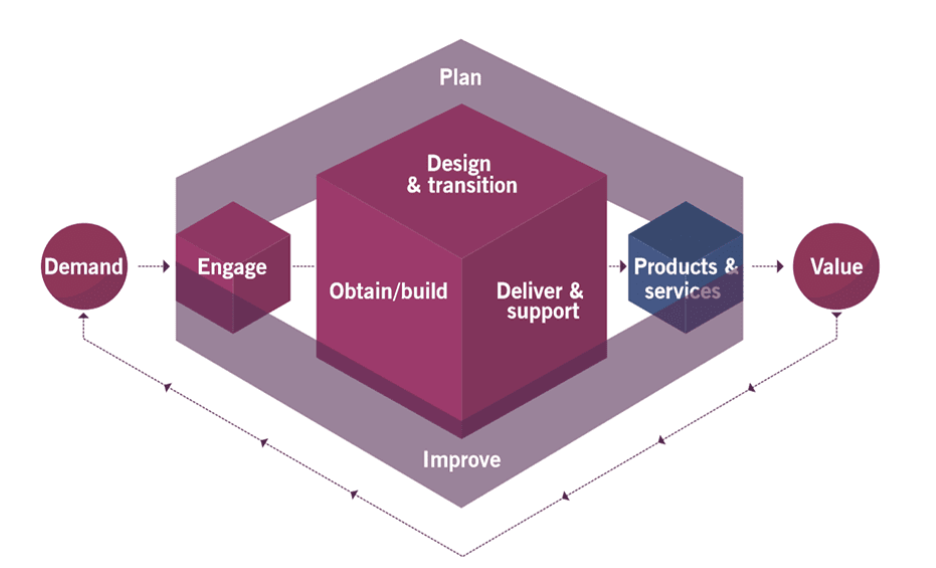ITIL® 4, Why Should You? What’s New?

Jurian Burgers

By 2019, when ITIL® 4 was finally launched, ITIL had been the leading guidance for IT Service Management for the past three decades. Millions of practitioners worldwide have applied it since its inception in their daily jobs to deliver and support IT services for the improvement of business results. Why change this? As a certified ITIL v3 Expert, consultant and service management trainer for 20 years, I was curious to find out what the novelties were.
I was surprised at first because the 26 processes in ITIL v3 were expanded to 34 practices in ITIL4. Note that ITIL doesn’t talk about ‘processes’ anymore. They are called ‘practices’. Looking a bit further, the additional practices are not new. They are just adopted from other business and IT-related fields. Examples are ‘Workforce and Talent Management’, ‘Risk Management’, ‘Business Analysis’ and ‘Project Management’.
I broke my head in thinking about how I could possibly help organizations and teach students in the use of the new concepts. ITIL4 talks about Service Value System, Value Chain, Value Streams, flexible operating models, guiding principles and four dimensions of IT Service Management. Would the newcomers in the field of IT Service Management ever be able to understand these concepts and models? Most of them are just looking for explanation and guidance on incident-, problem-, change- and configuration management.
The only thing left for me to do was to really dig into it. I certified myself as an accredited trainer and took the ITIL Managing Professional Transition course to fully understand ITIL4. This opened my eyes. I will explain this a bit further. At first, I was glad to see that the core of ITIL is still there. Practices like Incident-, Problem-, Change, Config, Service Level Management, etc. still exist. They are even updated to modern ways of thinking and working. Furthermore, ITIL4 can be regarded as an umbrella. Underneath it, it seamlessly integrates Project Management-, Agile-, DevOps-, Lean- and ITIL (v3) ways of working. And it warmly welcomes the possibilities of new technologies like Cloud Computing, Big Data, AI and other high-velocity IT developments at the same time! Also, I was glad to see that ITIL finally left aside the rigid and inflexible nature that processes hold. That has always been the criticism in adopting ITIL. Especially for those who did not really know how to use it. And to some extent, I don’t blame them for this. The key in ITIL is that all activities must contribute to value for the users and customers.

This new ITIL way of thinking and working holistically can be tough for die-hard technicians and experts. But hey, the world changes. Open your eyes. Look at the fast-moving and changing world we are in. Digital Transformation is happening all over. Successful fintech startups, game-changing blockchain implementations and the power of the voice of social media cannot be ignored. Moreover, they need to deliver value to customers and need to be managed. ITIL4 brings you the tools and practices to guide you in this challenge. It is up to you to reach out.
Critical note: Will it be the holy grail? Organizations are not that flexible in adopting and adapting new ways of working overnight. But it is definitely worthwhile looking into it and experiment with this super flexible model to support your IT services and deliver value to your customers. I wish you all the wisdom for the future.
ITIL® is a registered trademark of AXELOS Limited, used under permission of AXELOS Limited. All rights reserved.
Courses to help you get
results with Cloud
Professional Cloud Service Manager™
The industry-recognized CCC Professional Cloud Service Manager certification is recognized and supported by several key technology vendors and standards bodies. It provides you a case study with related exercises such as multiple-choice questions and workbook activities. We made sure to include various high-quality reference materials that you can go back to throughout your career advancement.

About the Author
Jurian Burgers, MSc, ITIL Expert and Managing Professional, CCC Expert Panel Member.
Never miss an interesting article
Get our latest news, tutorials, guides, tips & deals delivered to your inbox.
Keep learning




